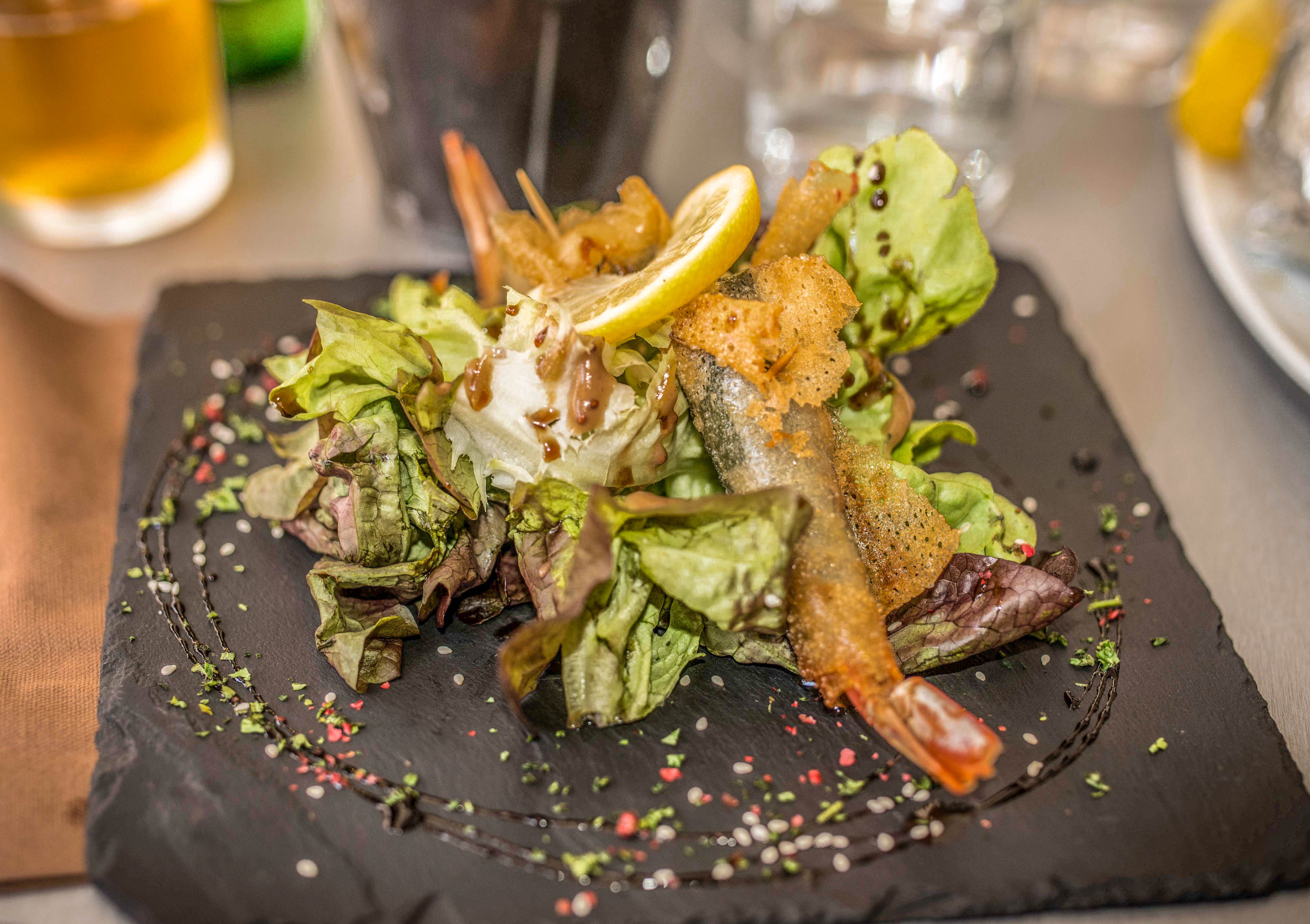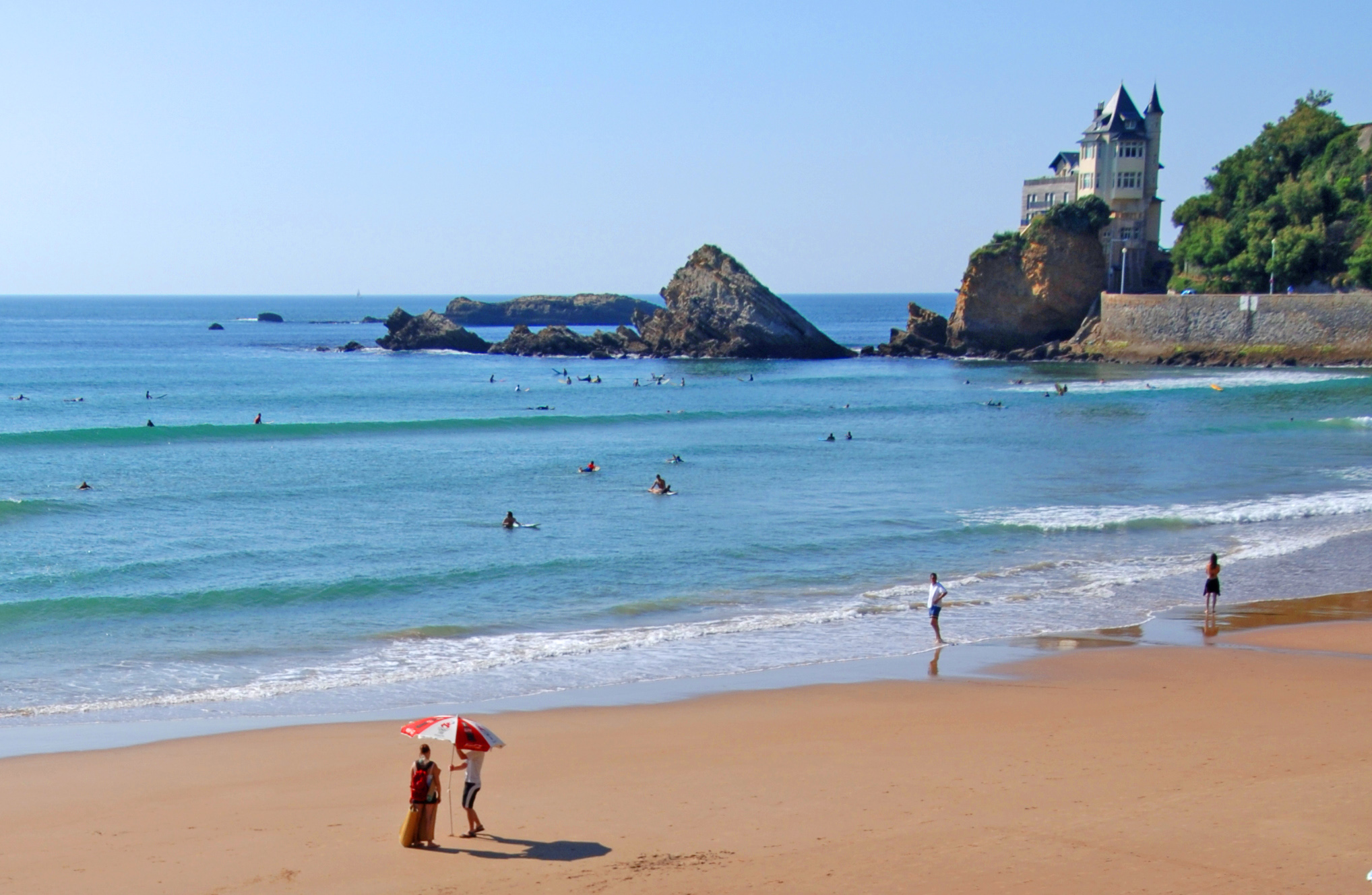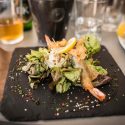On Egin!
An American In Basque
Cooking School
This story is for those who have dreamed of
cooking alongside the great chefs of Europe.
Enrolling at San Sebastian Cooking School was easy. I clicked the computer
from my Florida home and gave my
credit card number to the world wide web.
Soon I was flying across the Atlantic
aware that I would be likely scolded
by culinary perfectionists who don’t use ketchup
to cover their mistakes.
How badly would I embarrass myself,
my wife and my country?
I had anticipated my reception
with the master chefs in the kitchen of
the Five Star Maria Christina Hotel.
I had prepared
my responses just in case:
“What is your especiality?”
“I wrap things with bacon.”
“Do you require unique tools”
“Yes. I fire the grill with safety matches.”
“On your culinary path, are you a
chef de partie, a sous-chef, or
executive chef”
“I am the husband who thought this class would
be a good anniversary present.”
Soon I was skipping the cobblestone
stairs of Northernmost Spain– map in hand.
The hotel porter gave me a second look as I arrived in my best khakis and black polo shirt. I was no crude American. I read in advance that Europeans appreciate the effortless look.
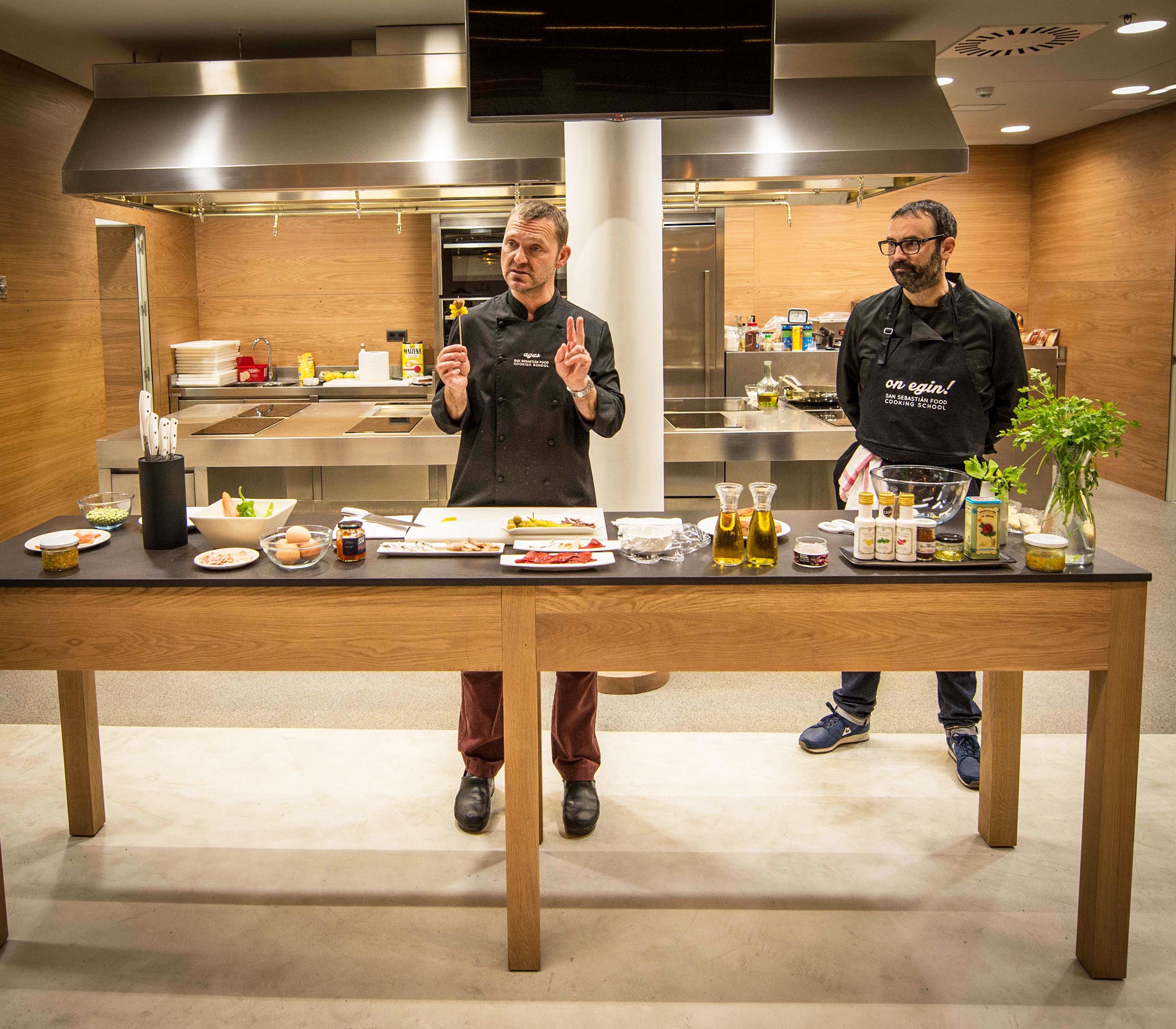
“First we shop, then we cook” announced Agus, an upbeat
Basque with a bartender’s easy manner. All introduced, Agus and our group of four: myself, my wife, whose many talents include speaking fluent French; Niki, a private banker from Guernsey ; and Asma, an attorney from the Kingdom of Saudi Arabia– departed on foot for San Sebastian’s central market. Every Basque city has a central market. This one held a soccer field
sized assortment of fish, meat, vegetables, wines, and spices.
“We are Basque. Not Spanish. Not French,” explained Agus.
We take food seriously. There are more Michelin 5-star restaurants in
Basque Country than anywhere in the world.
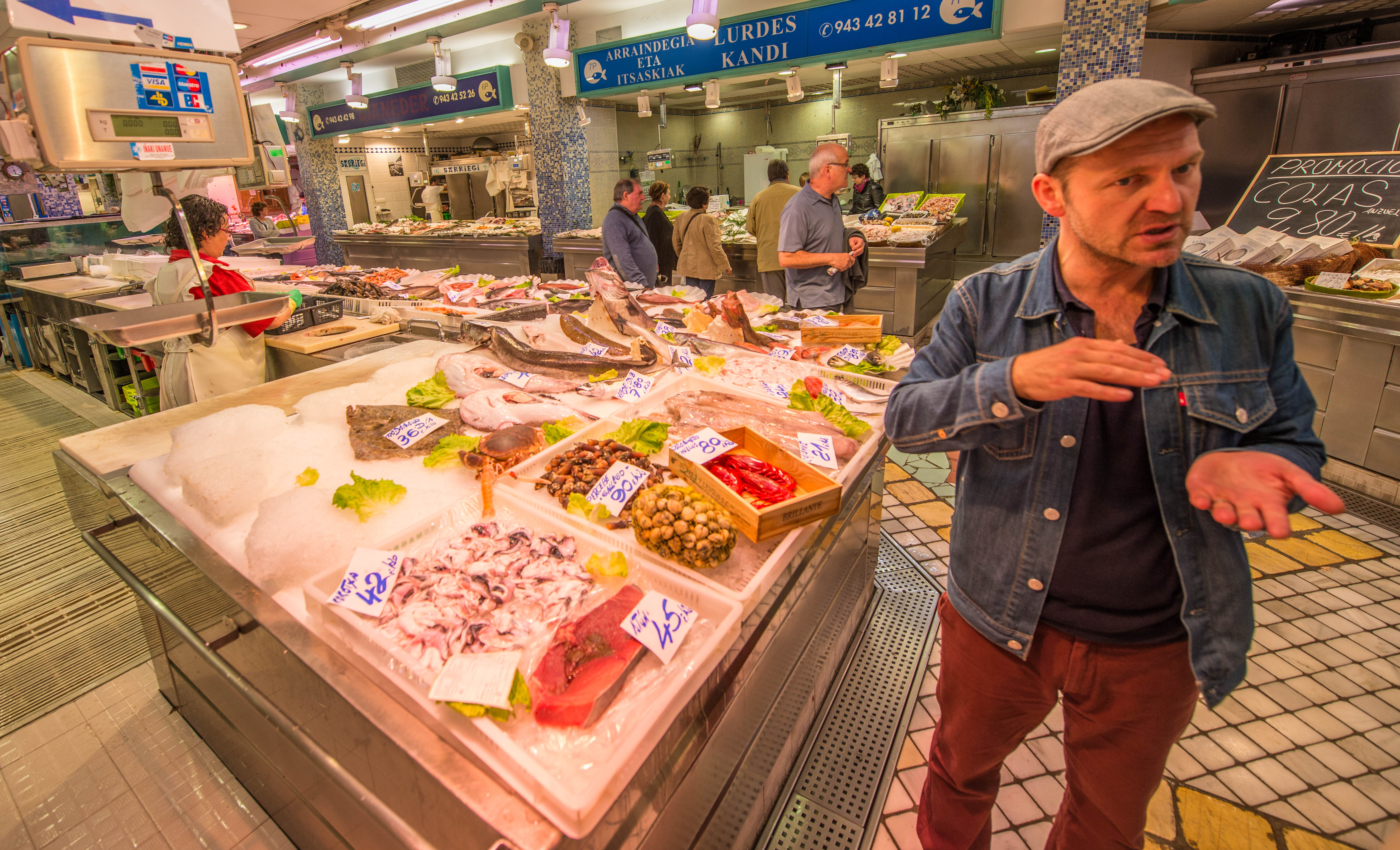
“Here in the butcher’s counter, you see every part of every animal– because we waste nothing.”
I noted hairy feet, snouts and parts unknown.
We purchased gambas (prawns that rival lobster for sweetness)
pork tenderloin, spring peas from a
local farm and anchovies just shaken from a fisherman’s net.
Agus dipped his hand into a bushel of the local peas and
tossed us handful each to taste. The raw greens exploded in the mouth with wonderful taste of the Basque countryside. Actually, I just made that up.
To me, they tasted like raw peas.
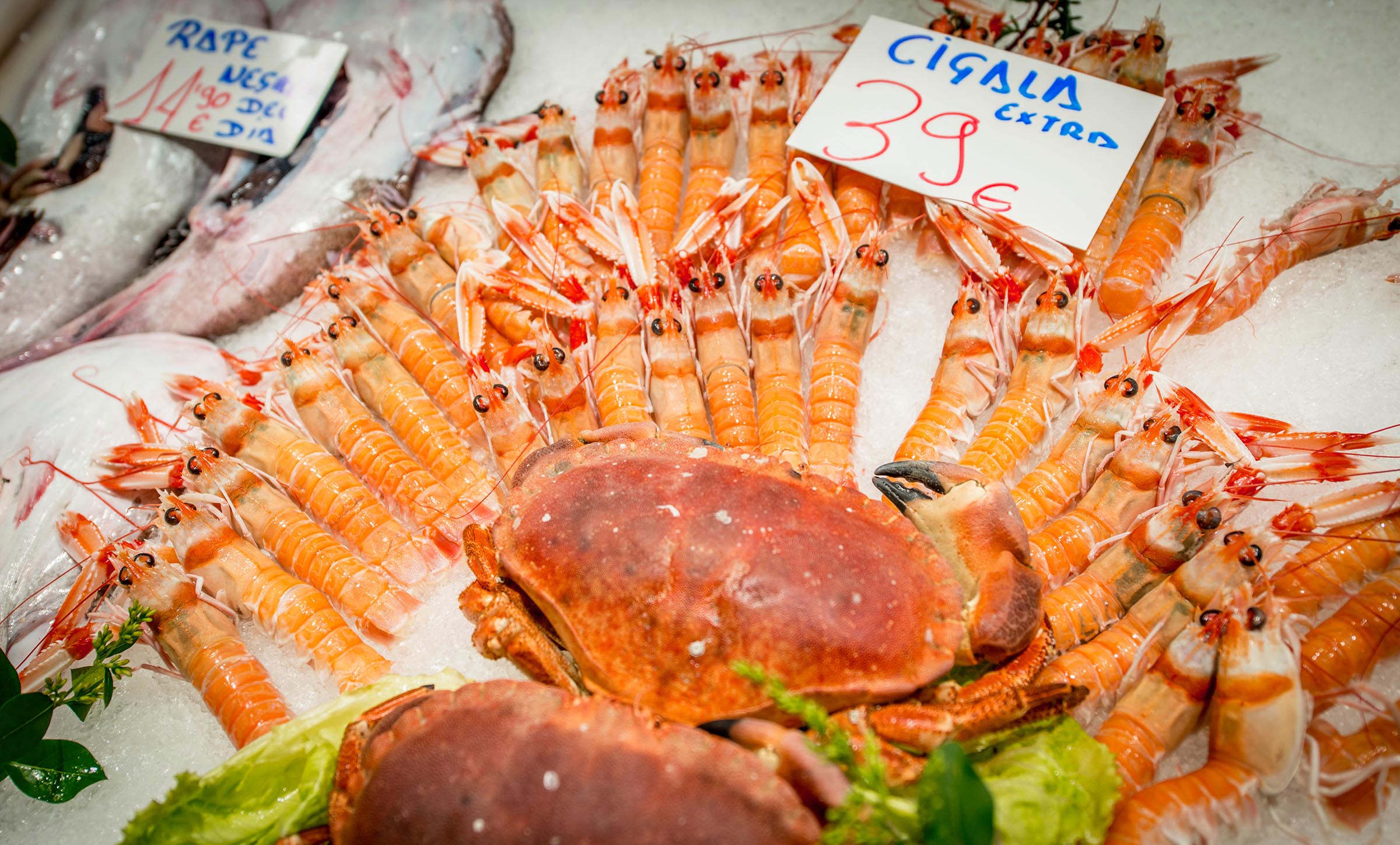
Back at the hotel, in a gleaming school kitchen,
Agus introduced us to Ben, another tall, thin, personable chef that
was captivating our mostly all-girl class with his studied politeness then
sounded out his words in English.
“Welcome to Pintxo Cooking Master Class!
Pinxtos are the centerpoint of Basque social life! There are
Hundreds of excellent Pinxto bars in San Sabastian alone, and it is customary to stroll from one to the next, sampling each bar’s signature Pintxo. “
Now, we start with The Gilda, the most famous pinxto named after Rita Hayworth’s title character in the 1946 film.”
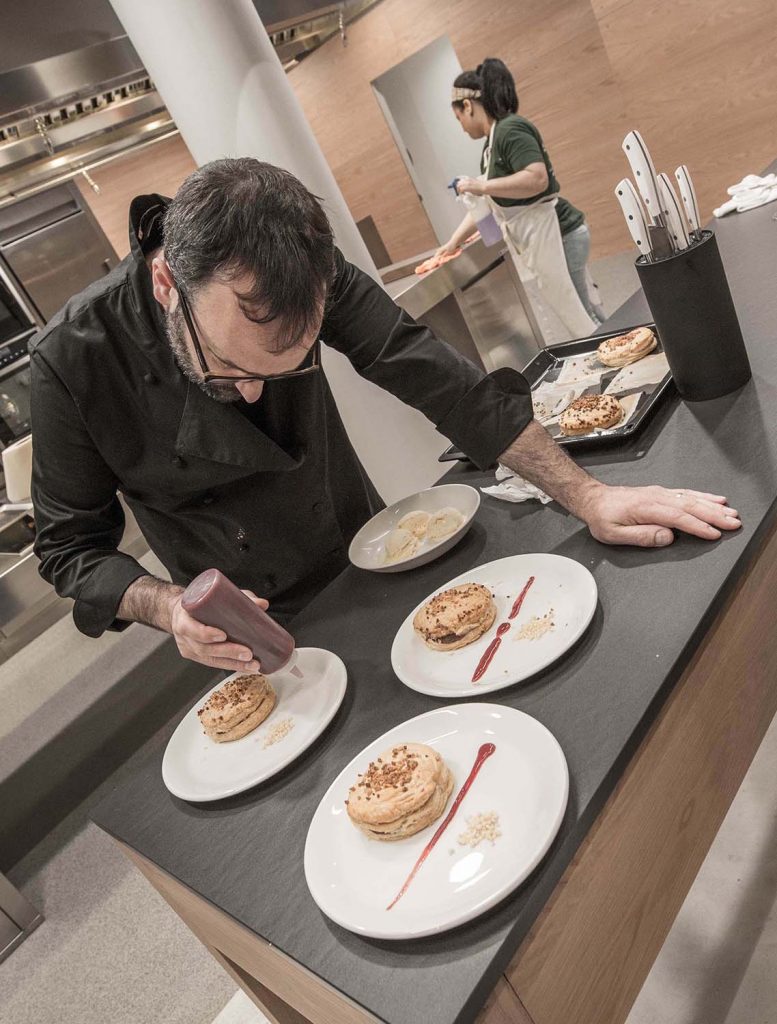
In front of me was a gleaming stone work station,
sink, and a slide-out drawer with neatly arranged knifes and tools.
I was given the task of cutting peppers and onions.
Which knife should I use? I blurted out like an American tourist.
“You use the knife that best fits your hand.”
I picked up a large shiny cleaver that balanced perfectly across the
bridge between thumb and forefinger. I felt like a gunslinger itching to pull the trigger.
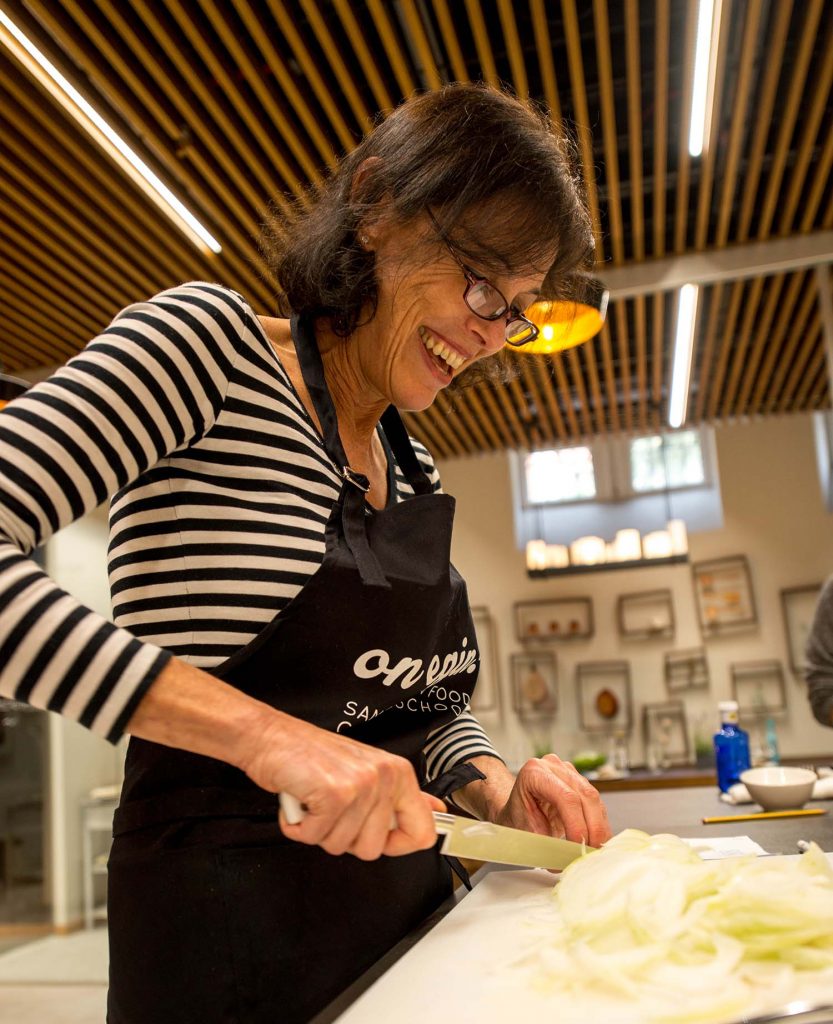
Soon, I was cutting quickly and awkwardly.
“Much, much smaller pieces!”
Turn the onion on its side. Julianne style.”
I did as told, and was a champ when it came to measuring olive oil and
vinegar.
With gusto we sampled Cider, while curling up anchovies in a dazzling arcs. We stabbed them with toothpicks. We added a guindilla pepper (look that one up Julia Child!), then drizzled the whole with high-quality olive oil. I say “drizzled”, because “drizzled” is a word that sounds
more impressive than “poured” and now that I had nearly finished
my first pintxo I was feeling like starting my own restaurant and perhaps hosting a cooking show in my off hours.
Completing each task earned us a sip of Txakoli—a Basque white wine which must be aerrated as its poured. Extend your arms as long as you can without dousing the floor. Then shout, “On Egin!” the Basque expression for
Bon Appetite, or “Come and Git it”. Down it it went, and
the taste was salty and vinegary at once.
The more Txakoli and Basque Cider I drank, the better the chef
I seemed to become! My knife and I bonded without
accident. My wife was beaming and the anniversary present was
a success. Soon, four hours had flown by, in which I
created and consumed Brocheta de Gambas (prawns with bacon!),
Guisantes con jamon y rosa de huevo (fresh peas around an
egg boiled in plastic wrap to look like a rose with some ham), solomillio iberico ( ham with carmelized onions and finally, Pantxineta (puff pastry with
chopped almonds. It took an additional brandy to wash it all down.
For graduating, I received a San Sebastian Cooking School apron
which I am sure would get me any culinary job I sought. Remembering the hotel porter, I choose not to wear my apron leaving the Hotel Maria Christina. I folded it carefully and placed it in my camera bag for a safe journey home.
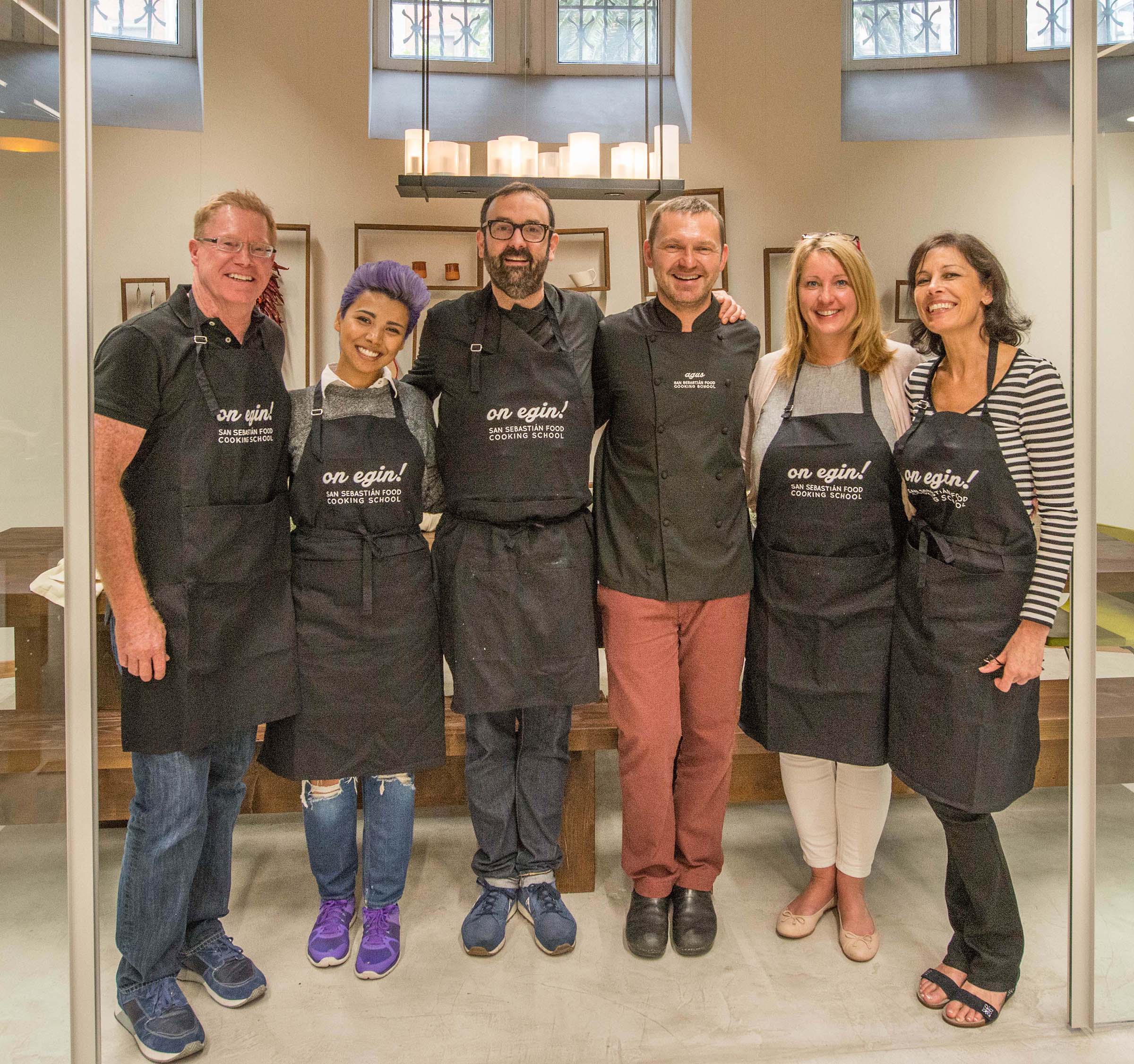
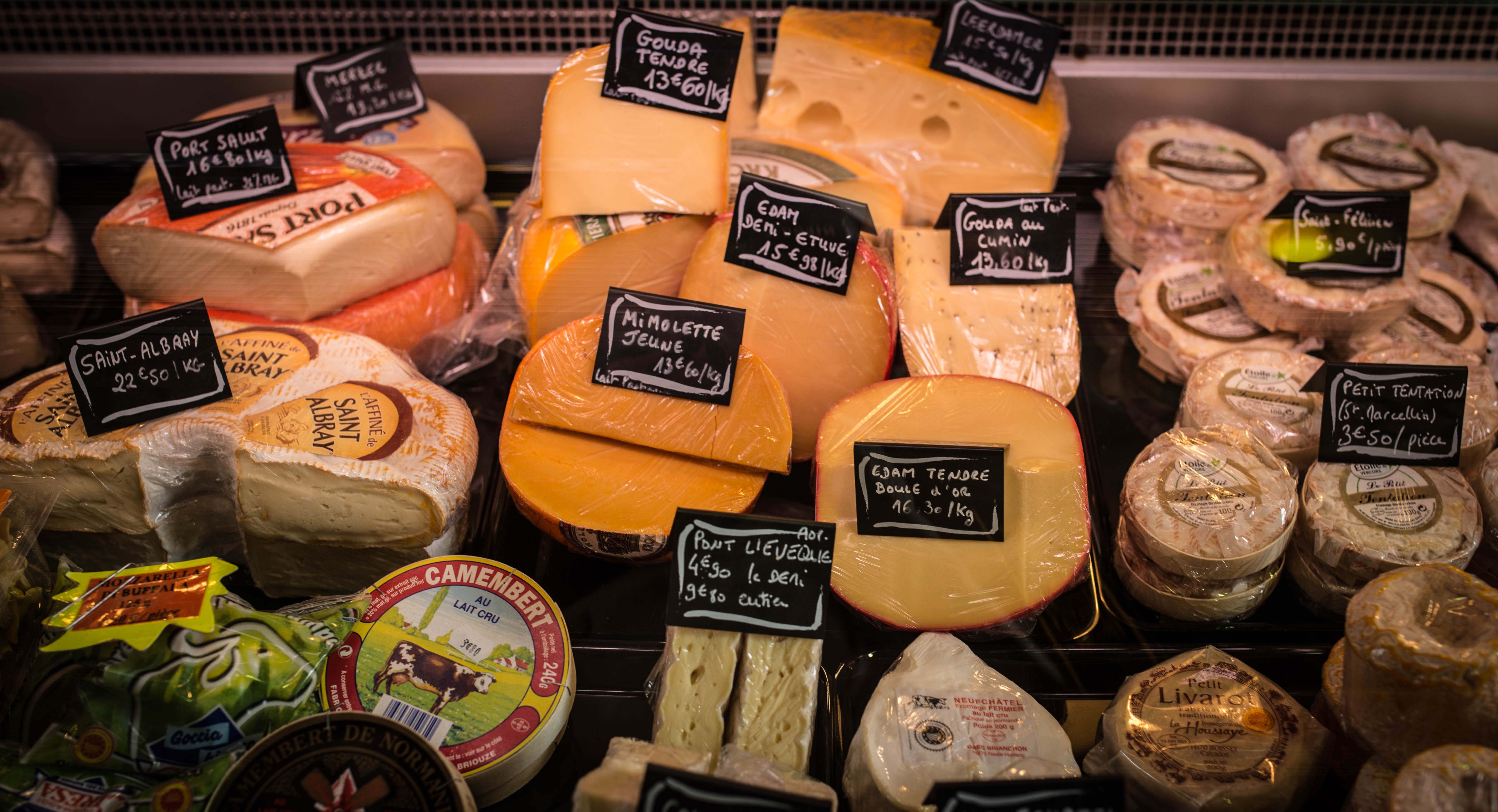
Everything tastes better in Europe.
Even the stuff you don’t like.
